Orkney, located off the northern coast of Scotland, is a group of islands that boasts a diverse ecosystem. One of the remarkable features of the archipelago is the presence of a wide variety of birds.
Due to its location, Orkney serves as a critical stopping point for migratory birds, which make their way from the Arctic tundra to the fields of Africa.
The natural habitats, rich coastal waters and fertile farmland provide a breeding ground for a range of bird species that flourish on the islands.
From puffins to sea eagles, the Orkney islands offer bird enthusiasts a unique opportunity to witness a spectacular display of avian diversity.
In this article, we explore the fascinating world of birds in Orkney and delve into the reasons why they are so cherished by both locals and visitors alike.
1. Great Skua
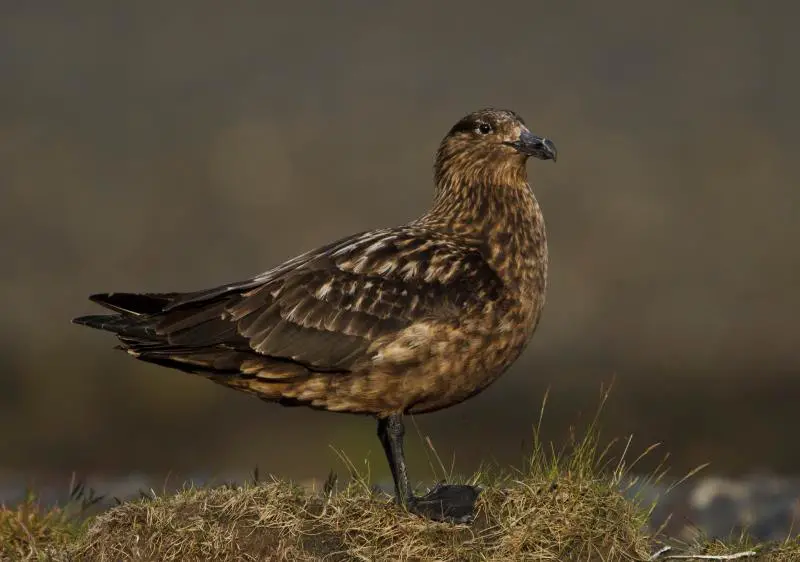
The Great Skua is a large sea bird belonging to the family Stercorariidae, found in areas such as Faroe Islands and Iceland.
It has a size similar to that of herring gulls, with its diet consisting mainly of fish caught at the surface or taken from other birds.
This species was first described by Danish zoologist Morten Thrane Brünnich in 1764 under the name Cath.
They are powerful predators who will sometimes use mobbing tactics against larger prey like gannets and eiders until they give up their catch.
These birds mate for life but may build nests near colonies if there aren’t enough suitable territories available on their own island range.
Although these skuas might seem intimidating due to their fierce nature when protecting young, they can be quite timid around humans so should not be approached too closely.
Scientific classification:
| Kingdom | Animalia |
| Phylum | Chordata |
| Class | Aves |
| Order | Charadriiformes |
| Family | Stercorariidae |
| Genus | Stercorarius |
| Species | S. skua |
Also Featured In: Beautiful Brazilian Birds, Birds that Live in Greenland
2. Grey Heron
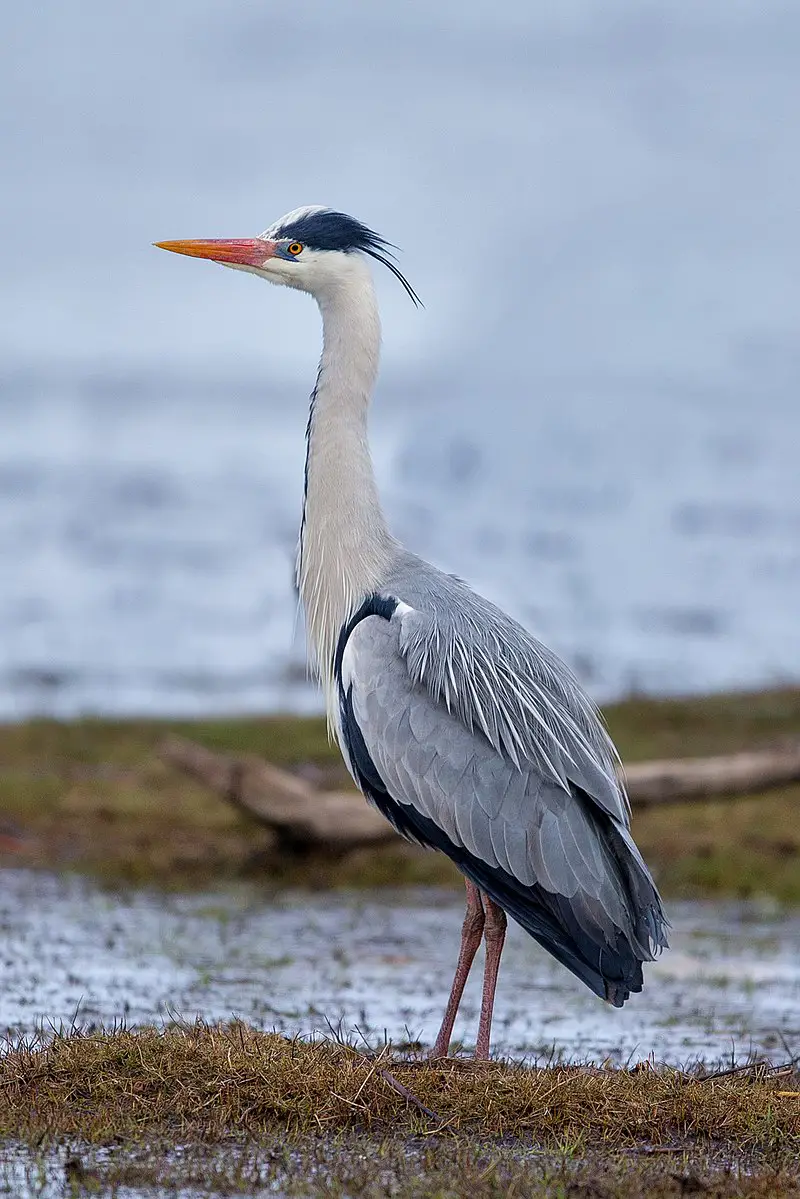
The grey heron is a majestic bird found in temperate regions of Europe, Asia and parts of Africa. It has long legs to wade through the shallow waters where it feeds on aquatic creatures such as frogs, fish and insects.
In wintertime some migrate southwards but others stay put in their natural habitats; lakes, rivers and marshes. They can also be spotted near coasts or along estuaries.
Grey Herons have beautiful blue-grey feathers and an impressive wingspan that makes them stand out from other birds when they soar gracefully across the sky.
These graceful creatures are not only easy on the eye but wise hunters too.
Scientific classification:
| Kingdom | Animalia |
| Phylum | Chordata |
| Class | Aves |
| Order | Pelecaniformes |
| Family | Ardeidae |
| Genus | Ardea |
| Species | A. cinerea |
Also Featured In: Common Birds in Japan, Water Birds Live around Us
3. Common Ringed Plover
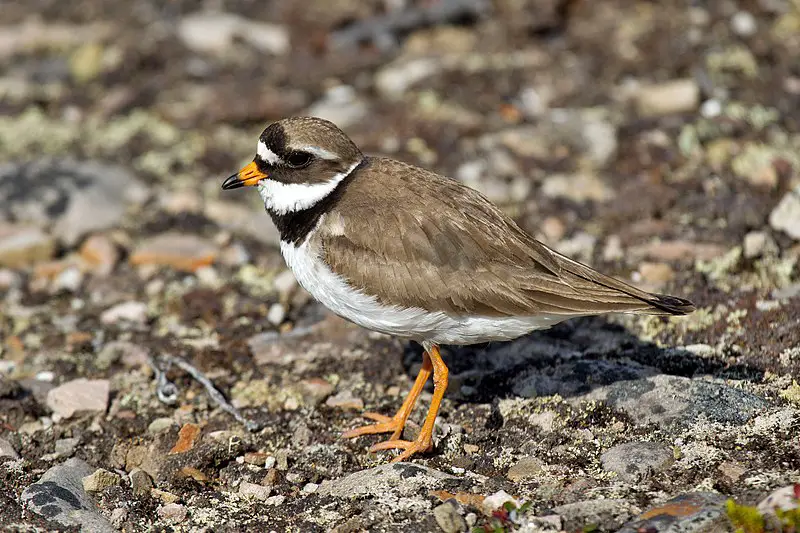
The Common Ringed Plover is a small migratory bird found in Arctic Eurasia. It has yellowish feathers and its Latin name, Charadrius hiaticula, means ‘bird of ravines’.
This species breeds on beaches and tundra during northern summer months before flying south when winter arrives.
Its diet consists mostly of insects which it catches by running along the shoreline or through shallow water with wings spread open to create a shadow that helps catch prey.
The common ringed plover nests in short grasses near water’s edge where they lay two eggs per clutch which hatch within three weeks.
These birds are highly territorial so will often defend their patch fiercely against competitors.
Scientific classification:
| Kingdom | Animalia |
| Phylum | Chordata |
| Class | Aves |
| Order | Charadriiformes |
| Family | Charadriidae |
| Genus | Charadrius |
| Species | C. hiaticula |
Also Featured In: Egyptian Birds, Birds that Live in Svalbard
4. Short-Eared Owl
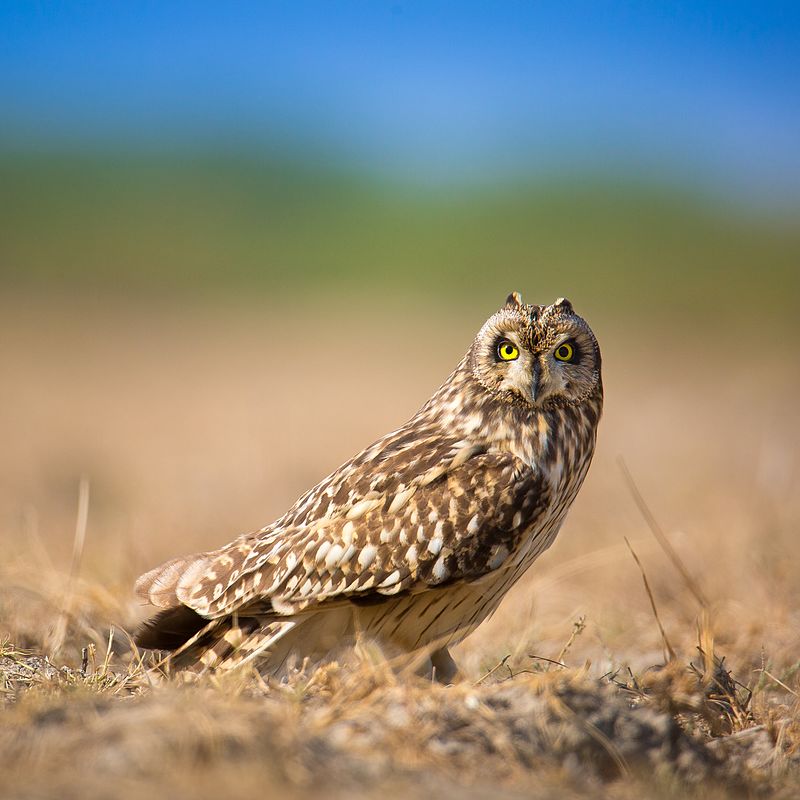
The Short-eared Owl is a species of owl belonging to the genus Asio, commonly known as ‘Eared Owls’. It has short tufts resembling mammalian ears that may or may not be visible.
When threatened they will display their tufts defensively; however these very short tufts are usually hard to spot.
This bird can be found in grassland habitats across much of the world and hunt mainly small mammals such as voles at night by swooping low over the ground from perches like trees and posts.
They also take other prey including birds, amphibians, reptiles and insects when available.
During breeding season males can often been seen performing aerial displays with claps of its wings while hovering above potential mates on territories it defends fiercely against intruders including humans.
Scientific classification:
| Kingdom | Animalia |
| Phylum | Chordata |
| Class | Aves |
| Order | Strigiformes |
| Family | Strigidae |
| Genus | Asio |
| Species | A. flammeus |
Also Featured In: Galapagos Birds You Should Know, Birds that Live in the Grasslands
5. Eurasian Curlew
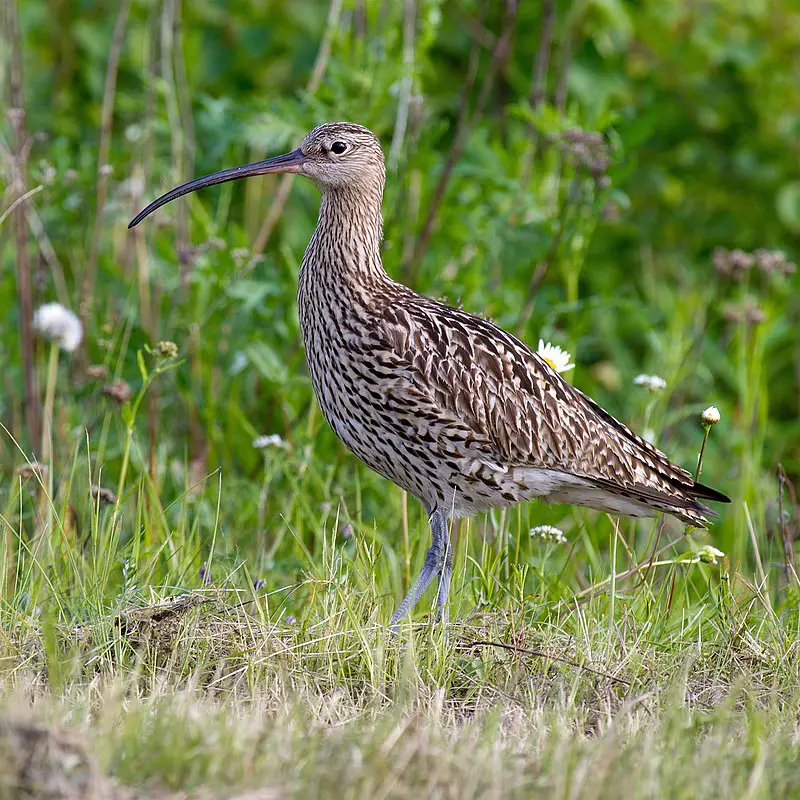
The Eurasian curlew is a wader bird belonging to the Scolopacidae family. It has an incredibly wide range, breeding across temperate Europe and Asia. This species can be easily identified by its long, curved bill and distinctive white underparts.
The male’s head typically appears striped while the female’s tends to be mottled brown in coloration with dark streaks on her neck and breast feathers.
With wingspans of almost two feet, these birds are quite large compared to other members of their genus.
Despite being so widespread they remain vulnerable due to ongoing habitat loss or degradation as well as hunting practices along migration routes or during wintering grounds visits.
Scientific classification:
| Kingdom | Animalia |
| Phylum | Chordata |
| Class | Aves |
| Order | Charadriiformes |
| Family | Scolopacidae |
| Genus | Numenius |
| Species | N. arquata |
Also Featured In: Native Birds Of Germany, Most Common Lithuanian Birds
6. Black-Headed Gull
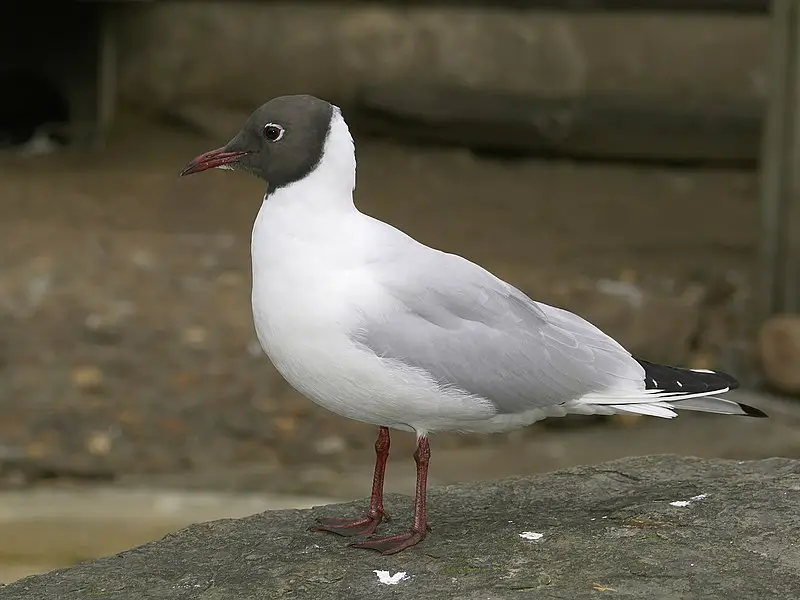
The Black-headed Gull is a small, migratory bird found in much of the Palearctic. It breeds mainly in Europe and coastal eastern Canada but can also be found further west in milder areas.
In North America it’s known as the Common Black-headed Gull.
Its plumage consists of grey on top with white underneath, while its head has a distinctive black cap during breeding season which fades to brown outside of this period.
They are often seen by coastlines or near inland waters where they feed off fish, insects and crustaceans caught either from the surface or underwater depending on their preference at that time.
Scientific classification:
| Kingdom | Animalia |
| Phylum | Chordata |
| Class | Aves |
| Order | Charadriiformes |
| Family | Laridae |
| Genus | Chroicocephalus |
| Species | C. ridibundus |
Also Featured In: Birds of United Kingdom, Flight Birds You Should Know
7. Barnacle Goose
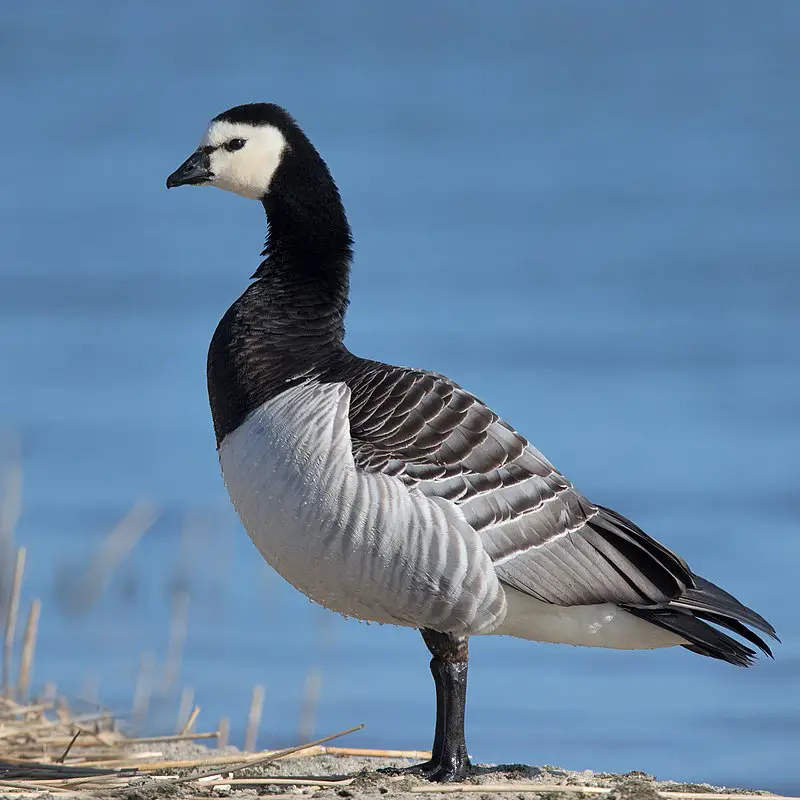
The Barnacle Goose is a species of black goose from the Branta genus. It has mostly black plumage and can be distinguished from other types of geese, such as grey Anser species, by its unique colouring.
This bird was first classified taxonomically in 1758 and genetic studies have recently revealed that it is actually related to the Cackling Goose lineage rather than brant geese which it bears resemblance to.
The barnacle goose lives all around northern Europe during winter months but travels further north into Greenland or Svalbard for breeding season when they will lay eggs on cliffs close to water sources so their young ones may take advantage of food-rich waters below them easily after hatching.
Scientific classification:
| Kingdom | Animalia |
| Phylum | Chordata |
| Class | Aves |
| Order | Anseriformes |
| Family | Anatidae |
| Genus | Branta |
| Species | B. leucopsis |
Also Featured In: Tundra Birds, Birds that Live in Faroe Islands
8. Arctic Tern
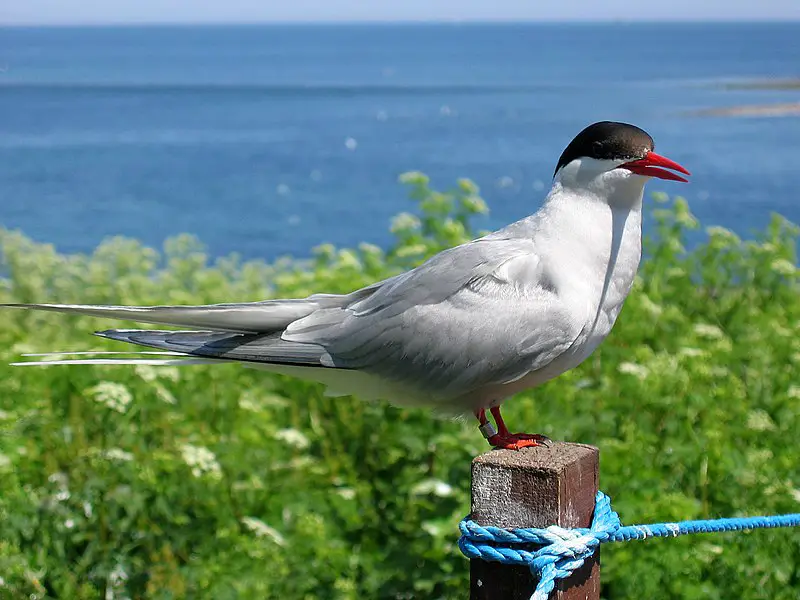
The Arctic tern is an incredible bird that displays a truly remarkable migratory behavior.
It breeds in the northern regions of Europe, Asia and North America during summer before undertaking its migration along a convoluted route to reach the Antarctic for winter.
This species has adapted extremely well to its environment – it can fly very long distances while navigating with ease thanks to their excellent eyesight.
Furthermore, they are able to survive in temperatures as low as -40 degrees Celsius.
The Arctic Tern is also known for being one of the longest living birds on Earth; some have been recorded living up to 30 years old.
Scientific classification:
| Kingdom | Animalia |
| Phylum | Chordata |
| Class | Aves |
| Order | Charadriiformes |
| Family | Laridae |
| Genus | Sterna |
| Species | S. paradisaea |
Also Featured In: Birds That Live in Benbecula You Should Know, Native Birds of North Uist
9. Black Guillemot
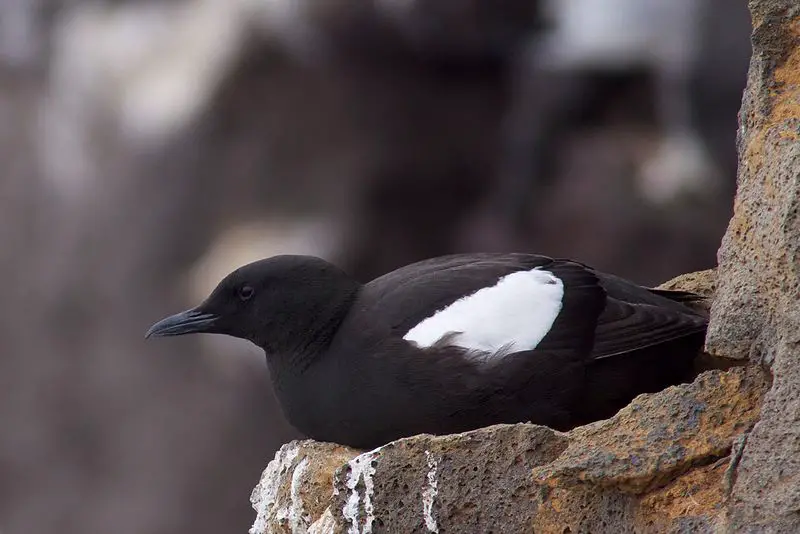
The Black Guillemot is a striking seabird found throughout the northern Atlantic coasts and eastern North American coasts. It has black feathers with white underparts, a red bill, and bright yellow feet.
They live around rocky shores, cliffs, and islands in single or small groups.
During winter months they migrate southwards from their high arctic breeding grounds to search for food sources such as fish eggs or invertebrates like shrimp that can be caught near shorelines.
Their diet also includes seeds and berries during summertime when they are nesting on coastal ledges creating burrows where they lay up to four pastel-colored eggs at once.
These amazing birds are very efficient swimmers using both their wings and webbed feet to propel themselves through water quickly while hunting prey.
Scientific classification:
| Kingdom | Animalia |
| Phylum | Chordata |
| Class | Aves |
| Order | Charadriiformes |
| Family | Alcidae |
| Genus | Cepphus |
| Species | C. grylle |
Also Featured In: Acadia National Park Birds, Birds That Live in Spitsbergen
10. White-Tailed Eagle
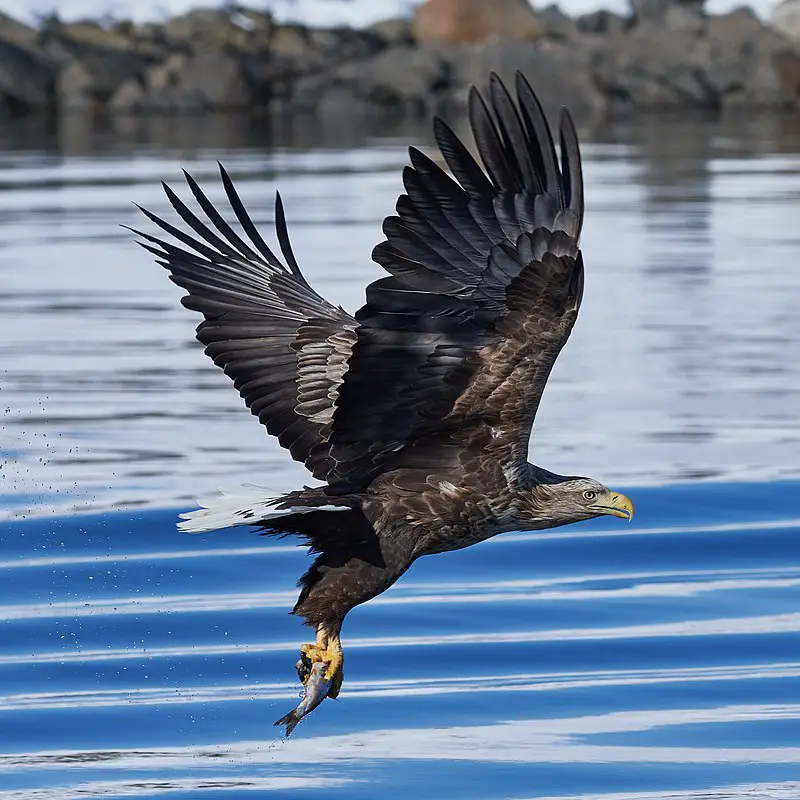
The white-tailed eagle is an impressive species of sea eagle found across temperate Eurasia. This majestic bird belongs to the family Accipitridae, which includes hawks, kites and harriers.
It has a wingspan of up to 2.5 meters and can weigh 4 kilograms or more.
The plumage varies in colour from dark brown above with paler head and neck while its tail is pure white – hence it’s name.
They feed mainly on fish but will also take small mammals, birds and carrion when available.
White-tailed eagles are solitary by nature but form pairs during nesting season typically near bodies of water such as lakes or coasts where they build large stick nests on trees or cliffsides for their young ones to hatch safely in peace.
Scientific classification:
| Kingdom | Animalia |
| Phylum | Chordata |
| Class | Aves |
| Order | Accipitriformes |
| Family | Accipitridae |
| Genus | Haliaeetus |
| Species | H. albicilla |
Also Featured In: Most Common Romanian Birds, Common Estonian Birds
11. Red-Throated Loon
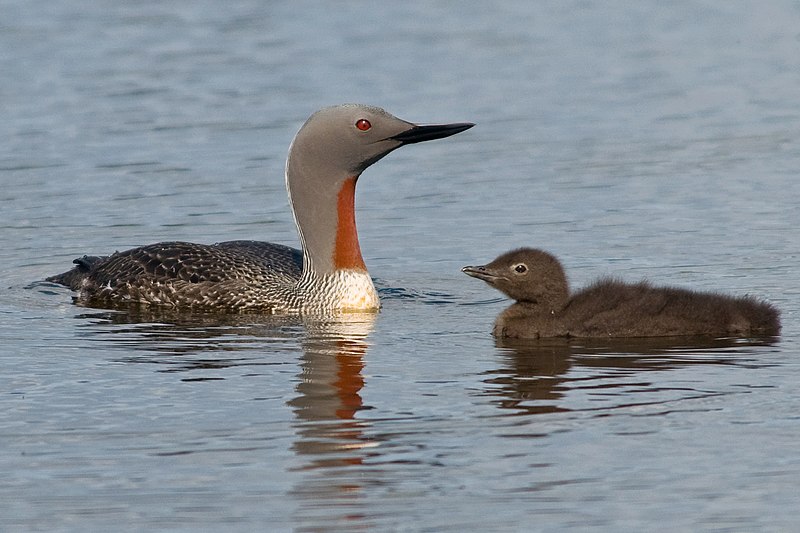
The Red-throated Loon is a migratory bird found in the northern hemisphere, with its breeding grounds primarily located in Arctic regions and wintering spots near coastal waters.
With an average length of 55 – 67 cm (22 – 26 inches), it’s the smallest member of the loon or diver family.
Its namesake comes from its bright red throat patch which contrasts against its white underside and grey back.
This species has adapted to life on icy seas; they are strong swimmers with powerful wings for long flights over open water when migrating seasonally.
Their diet consists mostly of fish but can also include crustaceans, molluscs, amphibians and insects depending on availability.
Scientific classification:
| Kingdom | Animalia |
| Phylum | Chordata |
| Class | Aves |
| Order | Gaviiformes |
| Family | Gaviidae |
| Genus | Gavia |
| Species | G. stellata |
Also Featured In: Native South Korean Birds, Italian Birds You Should Know
12. Common Eider
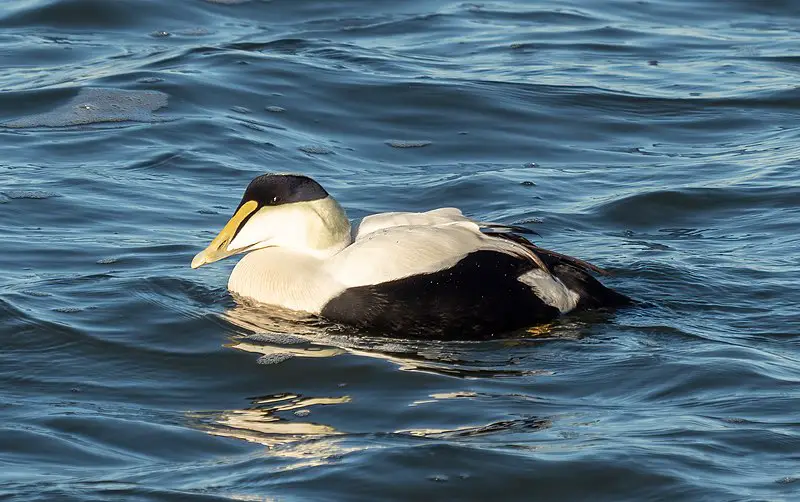
The Common Eider is a large sea-duck that inhabits coasts of Europe, North America and eastern Siberia.
It breeds in arctic regions as well as some northern temperate climates but travels further south during the winter months to form flocks with other ducks in temperate zones.
These birds are easily recognised by their characteristic black and white markings on their wings which can be seen when they take flight.
They have light brown bodies topped off with bright yellowish coloured heads making them quite striking creatures.
The eiders feed mainly on molluscs such as clams, mussels, snails and worms found at the bottom of shallow coastal waters or tidal flats.
Their diet helps improve water quality through natural filtering processes carried out by foraging for food underwater which benefits local marine ecosystems immensely.
Scientific classification:
| Kingdom | Animalia |
| Phylum | Chordata |
| Class | Aves |
| Order | Anseriformes |
| Family | Anatidae |
| Genus | Somateria |
| Species | S. mollissima |
Also Featured In: Common Birds in Canada, Common Birds Found in Wrangel Island
13. Common Redshank
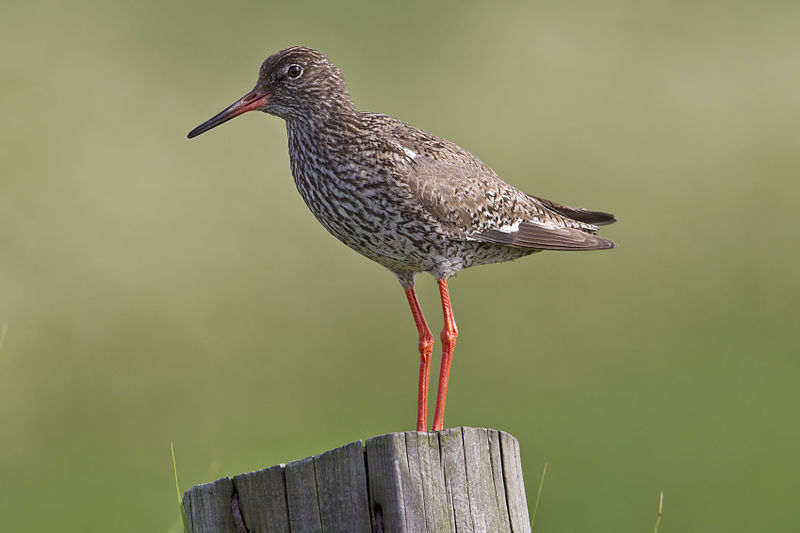
The Common Redshank is a wading bird found in Eurasia. It has long, red legs and dark grey wings. The body of the bird is brownish-grey with white patches on its sides and back.
Its bill is pointed and yellow to orange in colour, while its eyes are black or dark brown.
During migration they can be seen around coasts, estuaries and marshes where they feed mainly on small aquatic invertebrates such as worms, crustaceans and molluscs which it finds by probing mudflats with its bill.
They nest near wetland areas laying two to four eggs at a time during April or May depending on their location within Europe/Asia.
Redshanks often form large flocks when migrating southwards for wintering grounds in Africa or Asia making them easily visible from shorelines.
Scientific classification:
| Kingdom | Animalia |
| Phylum | Chordata |
| Class | Aves |
| Order | Charadriiformes |
| Family | Scolopacidae |
| Genus | Tringa |
| Species | T. totanus |
Also Featured In: Birds in Sri Lanka, Birds that Migrate to Sri Lankan
14. Hen Harrier
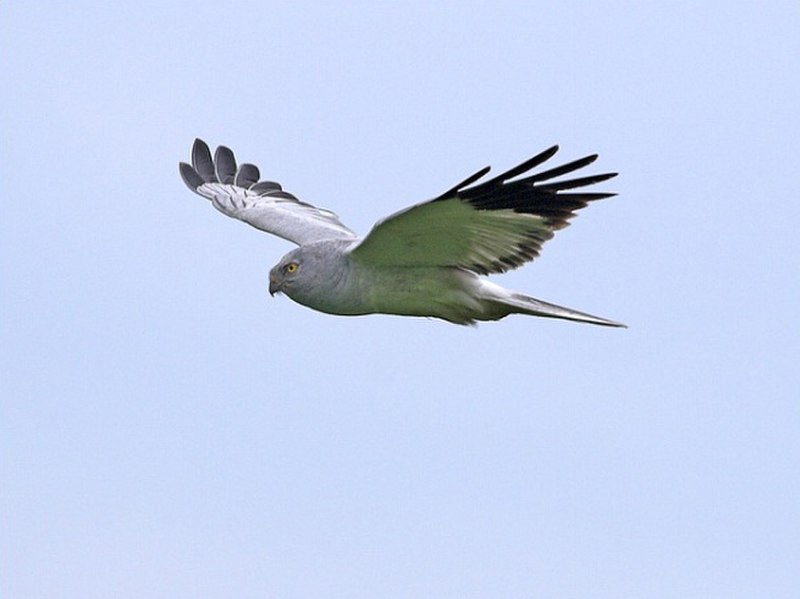
The Hen Harrier is a majestic bird of prey that breeds across Eurasia. It has the distinction of being one of the few birds to hunt free-roaming poultry, hence its name.
During winter months it migrates southwards towards Southern Europe and temperate Asia in search for more favourable climates than what can be found in its northern nesting grounds.
In milder regions like Great Britain and France, these raptors may remain year round where they are often spotted hunting over higher ground areas such as meadows or moorlands.
The hen harrier is an incredible sight with its dark wingspan soaring through the air while searching for small mammals or reptiles on which it feeds upon.
Scientific classification:
| Kingdom | Animalia |
| Phylum | Chordata |
| Class | Aves |
| Order | Accipitriformes |
| Family | Accipitridae |
| Genus | Circus |
| Species | C. cyaneus |
Also Featured In: Birds found in portugal, Common Cornwall Birds
15. Northern Gannet
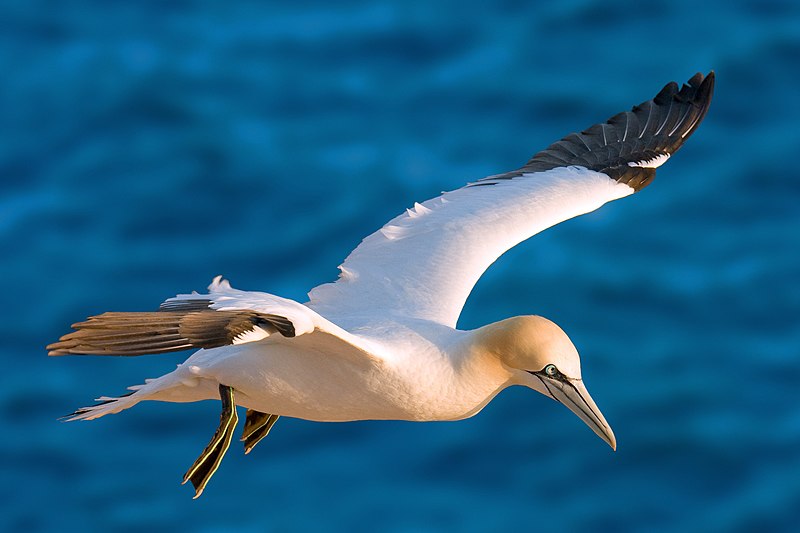
The Northern Gannet is the largest species of seabird in the northern Atlantic, with a white body and long neck.
It has yellowish head feathers and black tipped wings that can reach up to 6 feet across when fully extended.
The beak is large and orange-yellow in color. This bird breeds along western Europe’s coasts as well as northeastern North America.
They forage for fish by plunging into the sea from high above, making them an impressive sight to behold on any given day.
Their diet consists mainly of herring, mackerels or sand eels which they catch midair after diving at speeds reaching over 100 miles per hour.
With their striking features these birds are truly majestic creatures that have been around since prehistoric times – a testament to their hardiness and adaptability.
Scientific classification:
| Kingdom | Animalia |
| Phylum | Chordata |
| Class | Aves |
| Order | Suliformes |
| Family | Sulidae |
| Genus | Morus |
| Species | M. bassanus |
Also Featured In: Birds Live in Tunisia, Birds of Sweden
16. European Shag
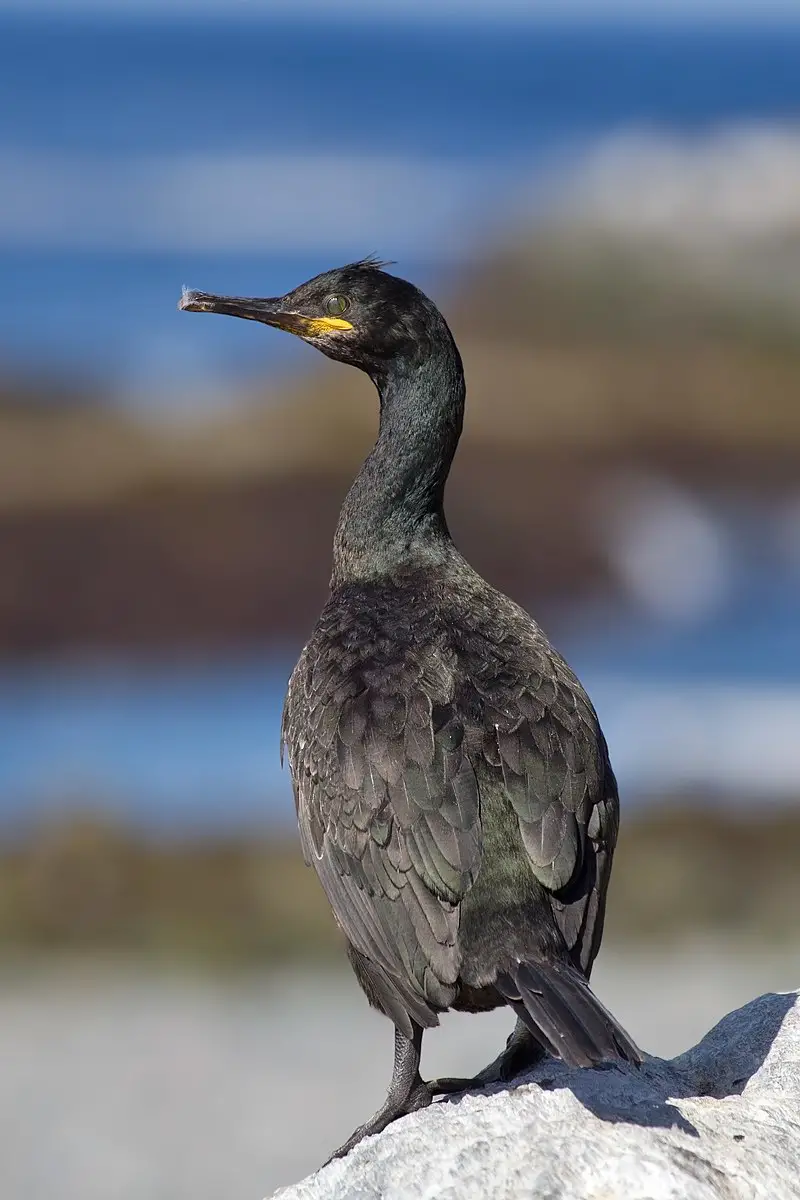
The European shag, or common shag, is a species of cormorant found in western and southern Europe, southwest Asia and north Africa. It usually winters in its breeding range except for the northernmost birds.
The bird has an unmistakable look with it’s greenish blue feathers on top of its head while having white underparts along with some black stripes over them.
Its long neck helps distinguish it from other cormorants as well as provide great sight while searching for food beneath the sea surface.
This seabird mainly feeds off fish but also eats crustaceans occasionally when available near their nesting grounds which are usually located around rocky coastlines close to open water bodies like seas and oceans.
Scientific classification:
| Kingdom | Animalia |
| Phylum | Chordata |
| Class | Aves |
| Order | Suliformes |
| Family | Phalacrocoracidae |
| Genus | Gulosus Montagu, 1813 |
| Species | G. aristotelis |
Also Featured In: Common Birds of Portugal, Feathered Wonders of the Farne Islands: A Bird Watcher’s Paradise
17. Oystercatchers
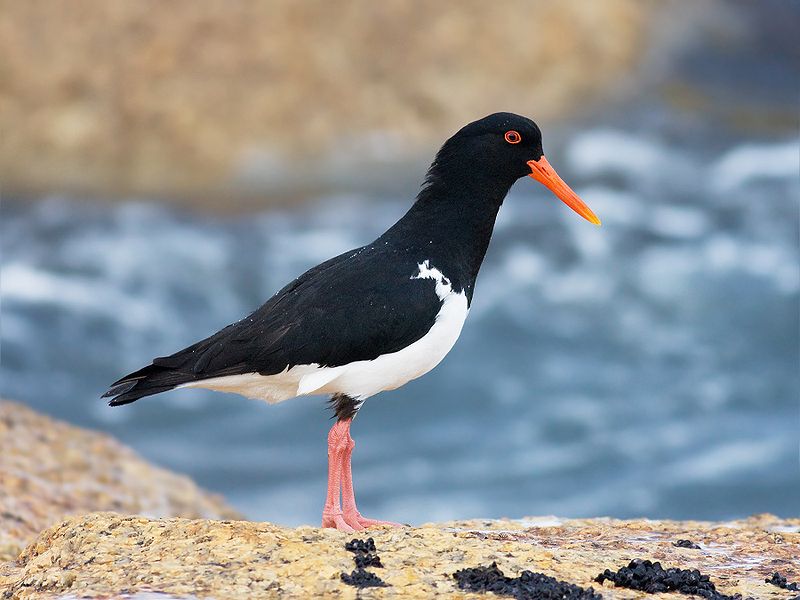
Oystercatchers are a family of waders forming the Haematopodidae, with one genus; Haematopus.
They live in coastal regions around the world excluding both polar and some tropical areas of Africa & South East Asia.
Eurasian, South Island & Magellanic oystercatcher species also breed far inland – breeding grounds being found much deeper than other members of the family.
They have long beaks used to feed on molluscs such as mussels, clams and oysters which they crack open using their strong bills.
Oystercatchers are usually quite vocal birds making various loud calls when disturbed or alarmed.
The males tend to display more brightly coloured plumage compared to females who share similar brown/black hues for camouflage purposes during nesting season.
Scientific classification:
| Kingdom | Animalia |
| Phylum | Chordata |
| Class | Aves |
| Order | Charadriiformes |
| Suborder | Charadrii |
| Family | Haematopodidae Bonaparte, 1838 |
| Genus | Haematopus Linnaeus, 1758 |
Also Featured In: Best Birds Watching in Austria, Native Birds of Kazakhstan
18. Common Murre
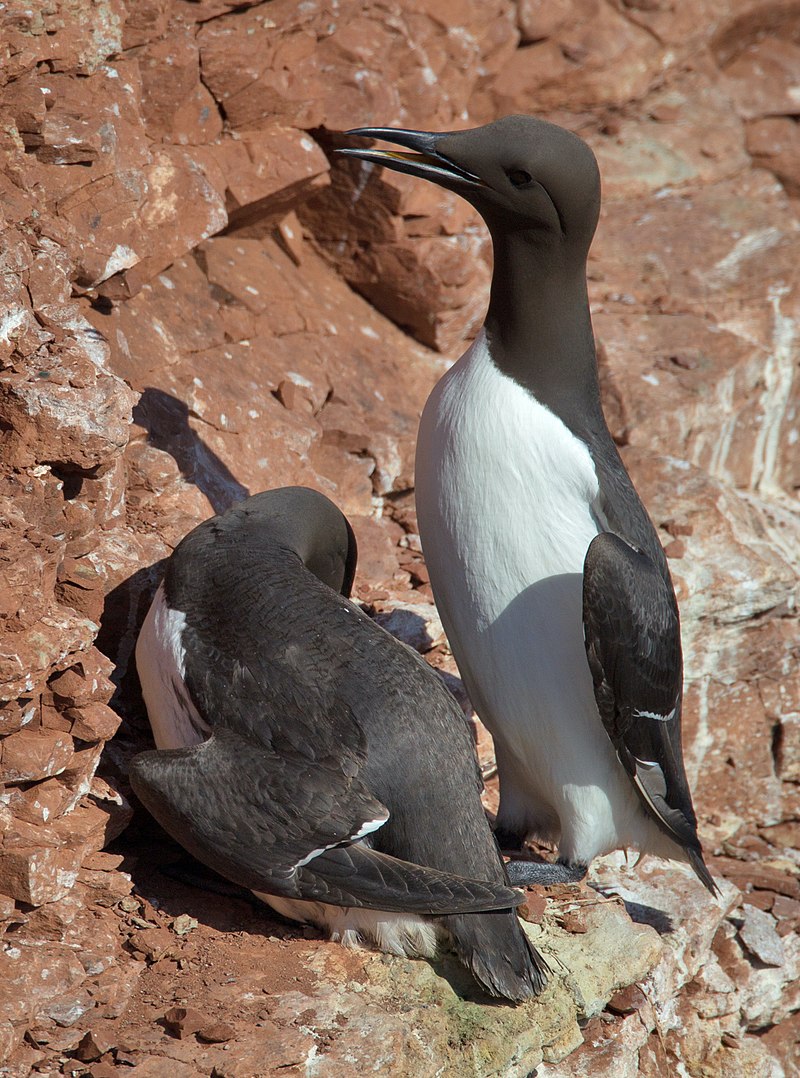
The Common Murre, also known as a Common Guillemot is an Arctic and Boreal seabird that can be seen in North Atlantic and North Pacific oceans.
It has a stocky body with white underparts, black upper parts and striking yellow legs.
They are relatively large birds compared to their relatives but have weak flying abilities – they fly fast but not very agilely.
Their agility lies underwater instead where they are able to dive deep into the ocean depths for food such as fish, crustaceans or molluscs.
During breeding season these birds come ashore on rocky cliffsides or islands where they create burrows for nesting purposes.
The female lays one egg each year which both parents share incubation duties over it until hatching at around 30 days later.
Scientific classification:
| Kingdom | Animalia |
| Phylum | Chordata |
| Class | Aves |
| Order | Charadriiformes |
| Family | Alcidae |
| Genus | Uria |
| Species | U. aalge |
Also Featured In: Norway Birds, Birds that Live in the Ocean
19. Long-Tailed Duck
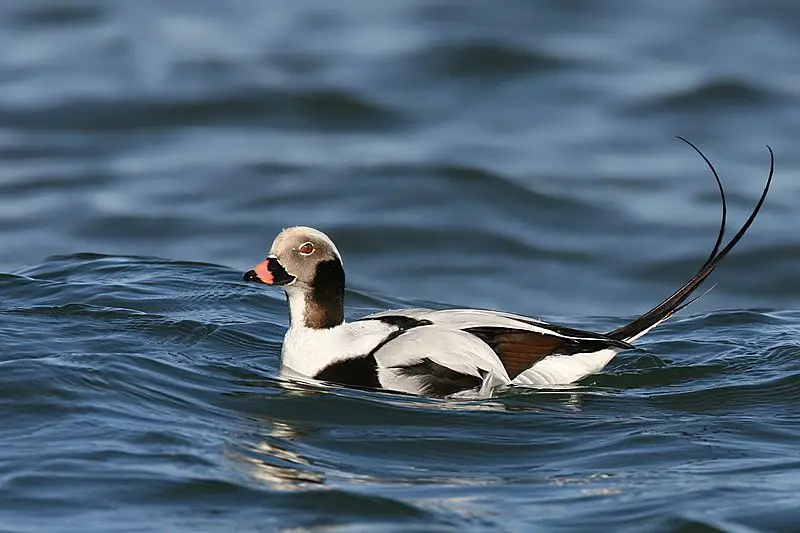
The Long-tailed duck, also known as the Oldsquaw, is a medium-sized sea duck found in the tundra and taiga regions of Arctic during breeding season.
It winters along northern coastlines of the Atlantic and Pacific Oceans.
This bird was formally described by Swedish naturalist Carl Linnaeus in 1758. The body length of this species varies from 44 to 57 cm with wingspan extending up to 80 cm long having unique tail feathers that are nearly twice their body length.
They have an elongated head which can be easily spotted when they swim on water surface or fly high above it.
Their diet consists mainly fishes, mollusks and aquatic insects which they hunt while swimming beneath water’s surface using their strong feet for propulsion into deeper waters unlike other ducks who feed on land surfaces near lakes or ponds.
Scientific classification:
| Kingdom | Animalia |
| Phylum | Chordata |
| Class | Aves |
| Order | Anseriformes |
| Family | Anatidae |
| Genus | Clangula Leach, 1819 |
| Species | C. hyemalis |
Also Featured In: Kuwait Birds, Most Common Birds of Netherlands Island
20. Razorbill
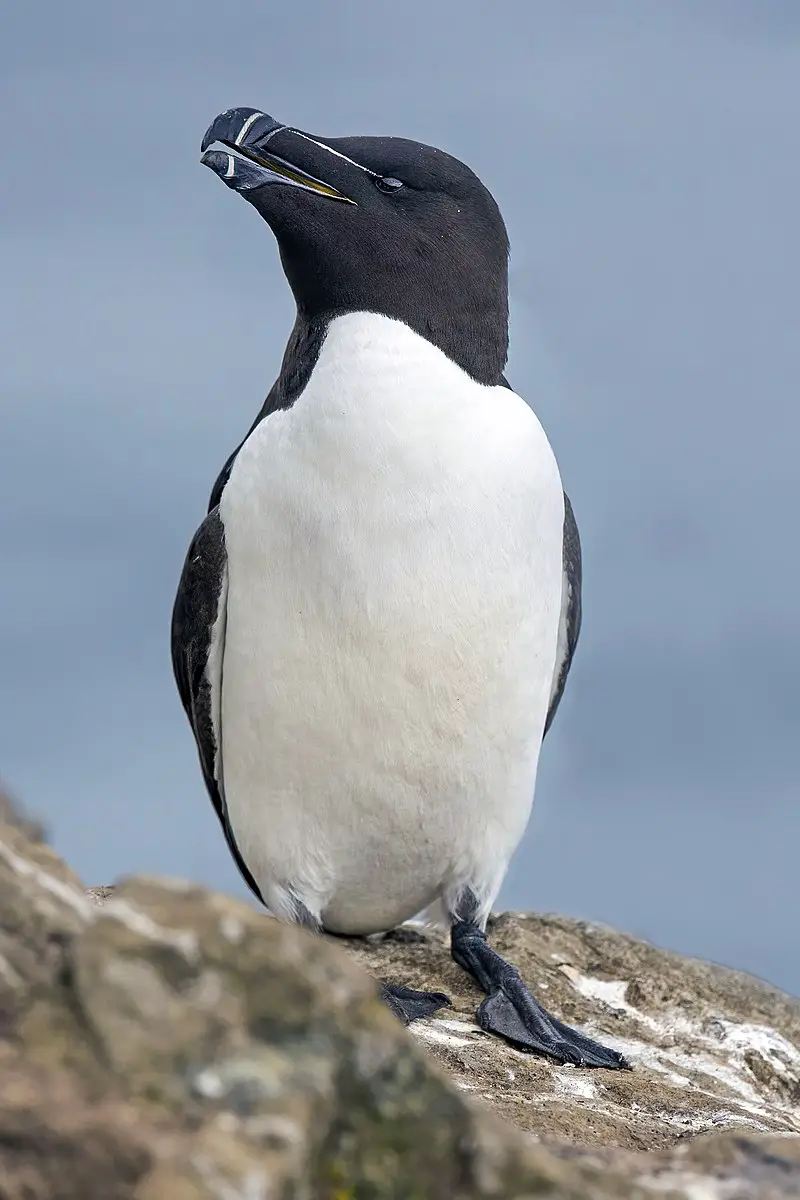
The Razorbill is a seabird of the family Alcidae and is closely related to the extinct great auk. It lives in subarctic waters of the Atlantic Ocean, primarily black with white underside and both male and female look identical.
They have long pointed wings which help them dive underwater for their food that consists mainly of fish and crustaceans.
Usually they form large colonies on cliffs or rocky islands but can also be found solitary during breeding season when pairs nest together in crevices or rock ledges near sea level.
During winter they migrate southwards into open water areas where they stay until spring arrives again before returning back to breed once more.
The razorbill’s population has been declining due to human activity such as overfishing so conservation efforts are being made by governments across Europe in order to protect this species from extinction.
Scientific classification:
| Kingdom | Animalia |
| Phylum | Chordata |
| Class | Aves |
| Order | Charadriiformes |
| Family | Alcidae |
| Genus | Alca |
| Species | A. torda |
Also Featured In: Iceland birds, Black And White Birds You Don’t Know About
21. Merlin
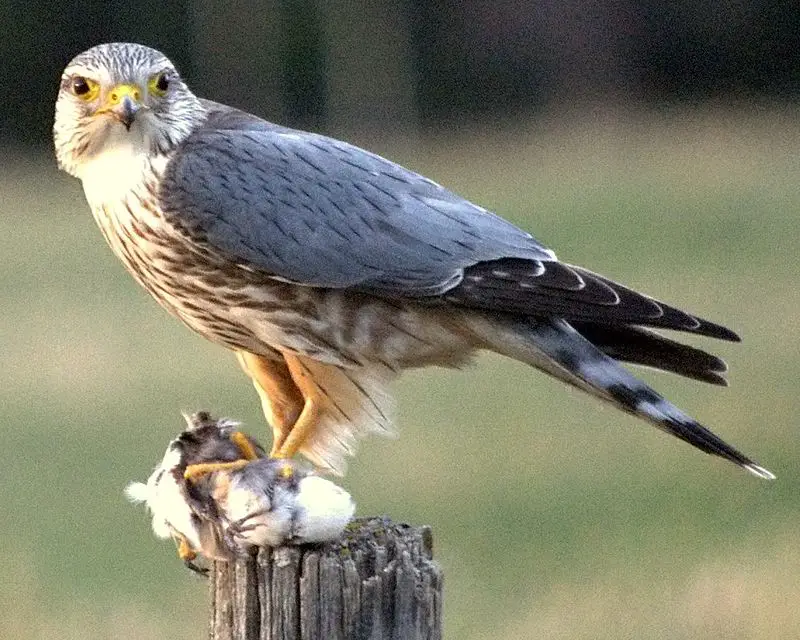
The Merlin is a small species of falcon found in the Northern Hemisphere. It has many subspecies across North America and Eurasia, and was once known as a Pigeon Hawk in North America.
Merlins breed mainly during summer months but some migrate to subtropical or northern tropical regions for winter season.
Males have wingspans ranging between 53-58 centimeters while females have slightly larger wingspan of 60-65 centimeters.
These birds are powerful fliers with fast aerial pursuits that can reach up to 50 mph.
Their diet consists mainly of insects, small mammals and other small birds which they hunt using their keen vision from high altitudes followed by swift dives down towards its prey at incredible speeds.
The Merlin continues to be an iconic symbol amongst bird enthusiasts due to its majestic beauty despite facing habitat loss around the world due to human activities such as deforestation and urbanization.
Scientific classification:
| Kingdom | Animalia |
| Phylum | Chordata |
| Class | Aves |
| Order | Falconiformes |
| Family | Falconidae |
| Genus | Falco |
| Species | F. columbarius |
Also Featured In: Falcons Species, Most Common Scotland Birds
22. Puffins
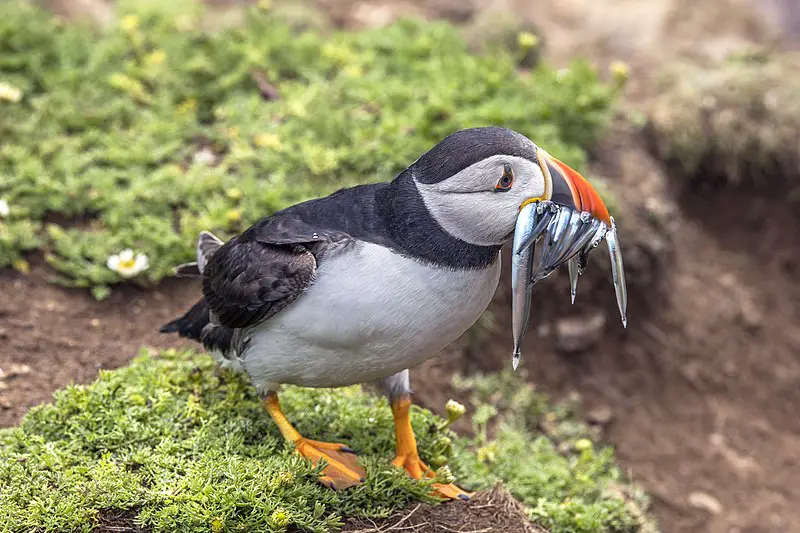
Puffins are small seabirds that belong to the bird genus Fratercula. They primarily feed by diving into the water and breed in colonies on coastal cliffs or offshore islands.
They can nest in crevices among rocks or in burrows in the soil. There are three species of puffins, with two found in the North Pacific Ocean and one in the Atlantic Ocean.
The tufted puffin and horned puffin are North Pacific species, while the Atlantic puffin is the only puffin species found in the Atlantic Ocean.
These birds have colorful beaks that are often compared to clowns’ faces, making them a popular sight among birdwatchers.
Puffins are fascinating creatures that have long been the subject of fascination and study among the scientific community.
Scientific classification:
| Kingdom | Animalia |
| Phylum | Chordata |
| Class | Aves |
| Order | Charadriiformes |
| Family | Alcidae |
| Tribe | Fraterculini |
| Genus | Fratercula Brisson, 1760 |
Also Featured In: Birds You’ll Find in the Sea, Famous Paintings Birds
23. Fulmars
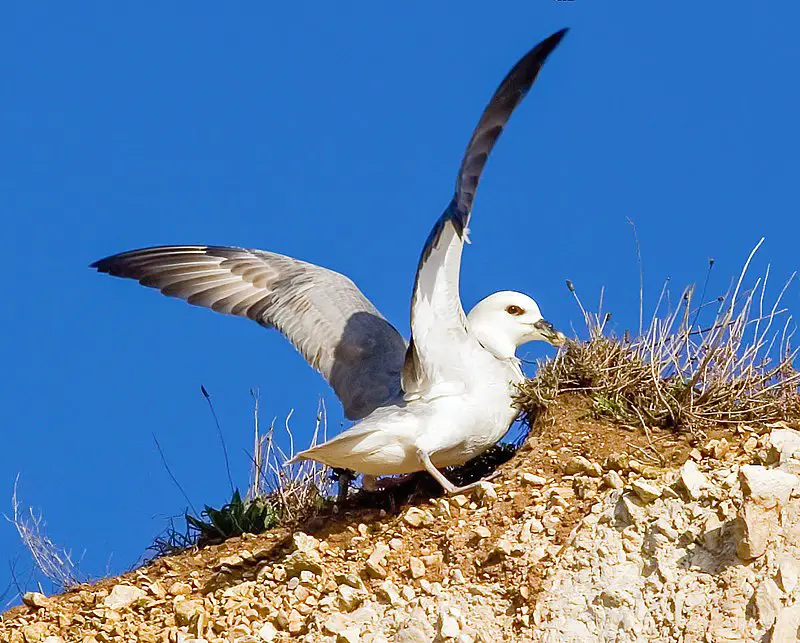
Fulmars are seabirds that belong to the Procellariidae family. They have two current species and two previous fossil species. They look like seagulls, but their flight and tube noses make them distinctive.
Fulmars lay one or two eggs on a ledge of bare rock or on a grassy cliff during breeding season. They nest on cliffs.
Scientific classification:
| Kingdom | Animalia |
| Phylum | Chordata |
| Class | Aves |
| Order | Procellariiformes |
| Family | Procellariidae |
| Genus | Fulmarus Stephens, 1826 |
Also Featured In: Shetland Islands Birds You Should Know, Birds of Farne Islands
24. Sandpiper
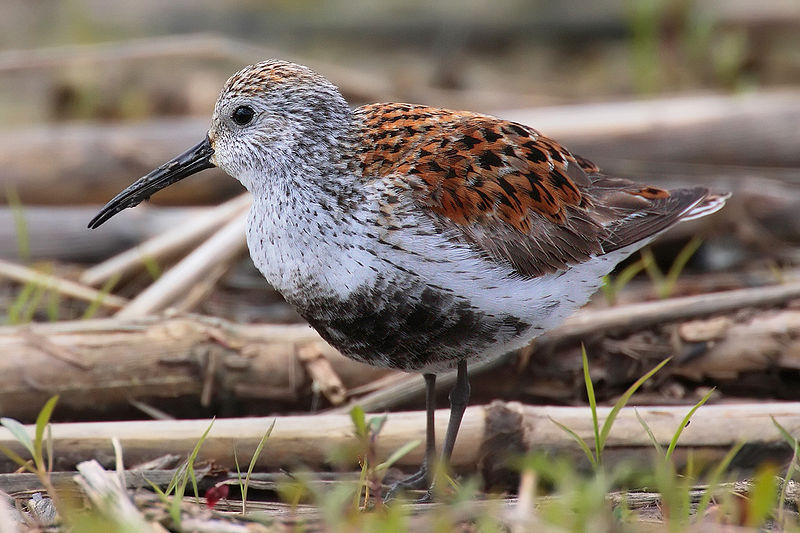
Sandpiper is a type of wading bird that belongs to the family Scolopacidae. It is a diverse family that includes various species such as curlew and snipe.
Sandpipers have different bill lengths that allow them to feed on small invertebrates and creatures found in mud or soil.
Due to this diversity, different species can coexist in the same habitat without competing for food.
Sandpipers are commonly found near the coast but are also found in other wetland environments.
They are known for their slender legs, long beak, and streamlined body that enables them to move easily in and out of water.
Sandpipers are a unique and fascinating bird species that are interesting to observe in their natural habitat.
Scientific classification:
| Kingdom | Animalia |
| Phylum | Chordata |
| Class | Aves |
| Order | Charadriiformes |
| Suborder | Scolopaci |
| Family | Scolopacidae Rafinesque, 1815 |
Also Featured In: Turkey Birds You Should Know, Ukrainian Birds You Should Know
25. Lapwing
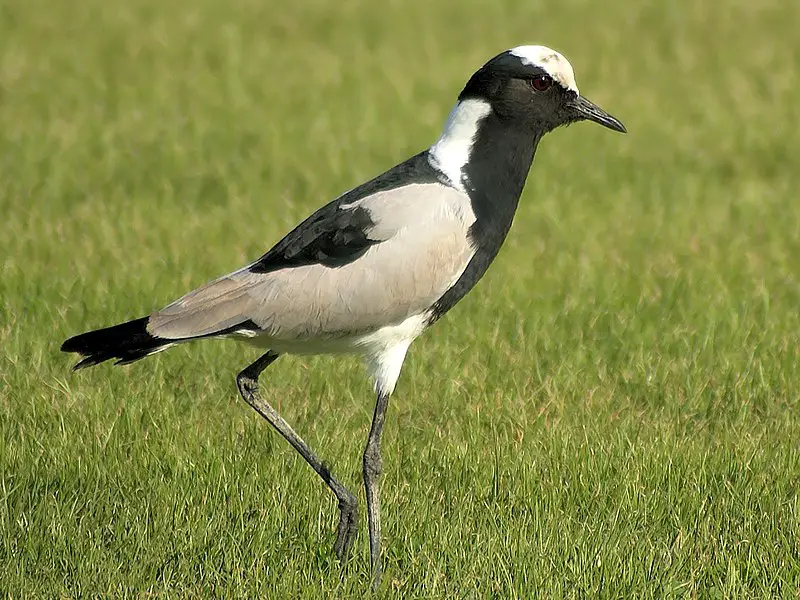
The Lapwing bird belongs to the subfamily Vanellinae and is a ground-nesting bird. It is similar to plovers and dotterels and ranges in size from 10 to 16 inches.
Lapwings are recognized for their slow, inconsistent wingbeats during flight and their high-pitched, wailing cry.
Interestingly, a group of Lapwings is known as a “deceit.” It is important to note that the terms “plover,” “lapwing,” and “dotterel” are not entirely interchangeable.
Lapwings are renowned for their striking appearance and stunning plumage. These birds are particularly skilled at camouflaging themselves and can blend in with their surroundings with ease.
Lapwings are fascinating creatures that are worth exploring further for bird enthusiasts and nature lovers alike.
Scientific classification:
| Kingdom | Animalia |
| Phylum | Chordata |
| Class | Aves |
| Order | Charadriiformes |
| Family | Charadriidae |
| Subfamily | Vanellinae Bonaparte, 1842 |
Also Featured In: Birds of Wales: Exploring Diverse Habitats and Conservation Efforts,
26. Greylag Goose
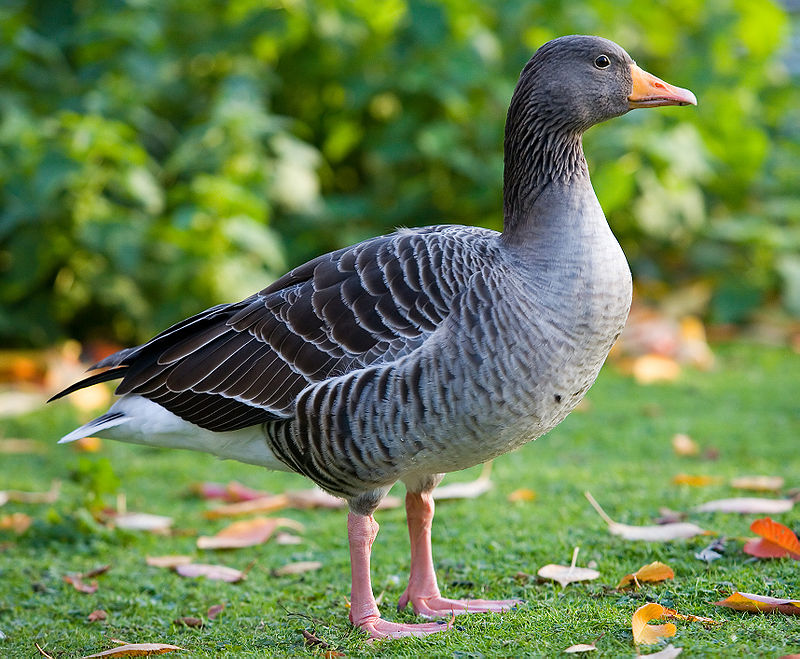
The Greylag goose, also known as the Graylag goose, is a large waterfowl bird belonging to the Anatidae family.
This bird species is the typical species of the genus Anser and is easily identified by its mottled and barred grey and white plumage, orange beak, and pink legs.
It is a big bird, measuring between 74-91 centimeters in length and weighs an average of 3.3 kilograms.
The Greylag goose is widely distributed and found in various habitats throughout its range. Despite being large birds, they are known for their graceful and elegant flight style.
These birds also mate for life and the pairs bond during the breeding season. Due to their robust nature, Greylag geese are highly protected, and their numbers are steadily increasing.
Scientific classification:
| Kingdom | Animalia |
| Phylum | Chordata |
| Class | Aves |
| Order | Anseriformes |
| Family | Anatidae |
| Genus | Anser |
| Species | A. anser |
Also Featured In: Belarus Birds You Should Know, Birds That Live around East Falkland
27. Meadow Pipit
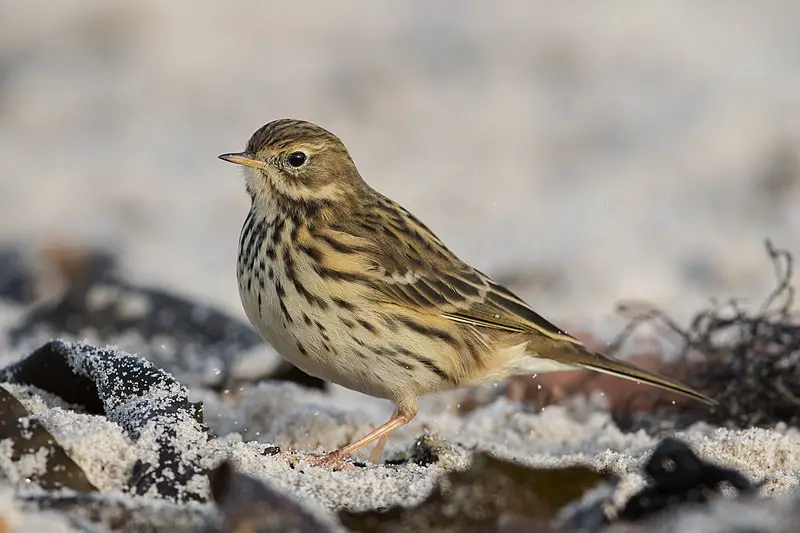
The Meadow pipit is a small bird that is found in the Palearctic region. It breeds in various parts of the region, including southeastern Greenland, Iceland, and central France.
The bird also inhabits areas east of the Ural Mountains, and a small isolated population can be found in the Caucasus Mountains. The Meadow pipit is a migratory bird and travels extensively during this time.
It winters in different parts of southern Europe, North Africa, and southwest Asia. Due to its size and active behavior, it is known to be a difficult bird to locate in open grasslands and meadows.
The Meadow pipit feeds on insects and other small invertebrates and has a melodious song.
Although the bird is widespread, its populations have been affected by changes in agricultural practices, and urbanization.
Scientific classification:
| Kingdom | Animalia |
| Phylum | Chordata |
| Class | Aves |
| Order | Passeriformes |
| Family | Motacillidae |
| Genus | Anthus |
| Species | A. pratensis |
Also Featured In: Moorland Birds You Need to Know,